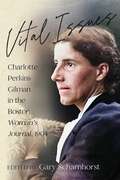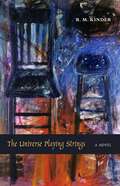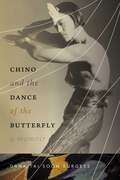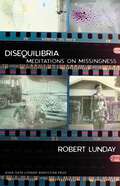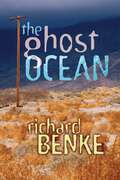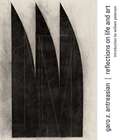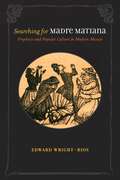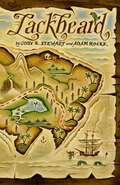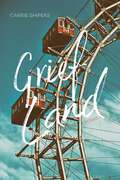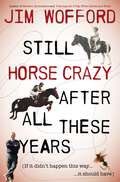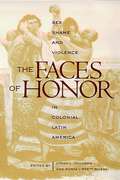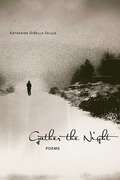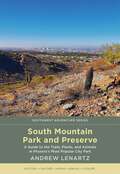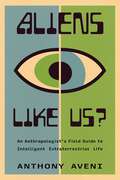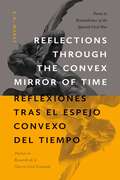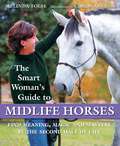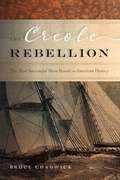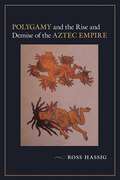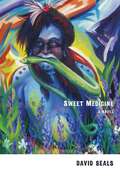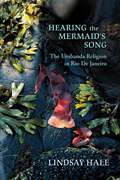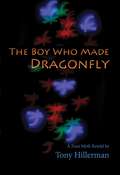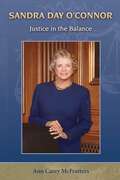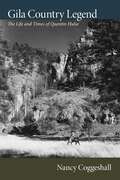- Table View
- List View
Vital Issues: Charlotte Perkins Gilman in the Boston Woman's Journal, 1904
by Gary ScharnhorstVital Issues presents an annotated scholarly edition of the weekly columns Charlotte Perkins Gilman, the most prominent American feminist intellectual during the early twentieth century, contributed in 1904 to the Boston Woman&’s Journal, the leading journal of the US woman&’s movement.At the height of her career in 1904, Charlotte Perkins Gilman contributed dozens of essays to the Boston Woman&’s Journal, &“the only Voice of the Woman&’s Movement in this country, if not the world,&” as she later declared. Gilman aimed to transform &“the whole woman movement&” because she believed the right to vote was a necessary but insufficient goal. Her weekly column presumed that &“the woman&’s movement is larger than the suffrage movement and includes it; and that the very cause to which this paper is devoted will be most advanced by a more inclusive treatment.&”These essays silhouette the foundations of her feminism and anticipate much of her subsequent writing.
The Universe Playing Strings: A Novel
by R. M. KinderMusic is the heartbeat of this novel about the world of hometown musicians—the jamming venues, the contests, the onstage cues, the subtle rules. The story focuses on four musicians: Carl Bradshaw, an aging Oklahoma fiddler; Amy Chandler, a young dumpling who can outpick most guitarists; Jack Martin, who lives in the shadow of a successful father; and Cora, an older woman on the edge of a world she believes can&’t be hers. The novel&’s structure reflects the sets of a performance on stage, with smaller sections that serve to introduce the musicians. Song titles, phrases, and sounds are part of the language, as are the characters&’ styles in speaking about music, creating it, and performing it. With its winning evocation of the joy of playing together, The Universe Playing Strings will remind readers of the movies Once and Crazy Heart.
Chino and the Dance of the Butterfly: A Memoir
by Dana Tai BurgessRenowned Korean American modern-dance choreographer Dana Tai Soon Burgess shares his deeply personal hyphenated world and how his multifaceted background drives his prolific art-making in Chino and the Dance of the Butterfly. The memoir traces how his choreographic aesthetic, based on the fluency of dance and the visual arts, was informed by his early years in Santa Fe, New Mexico. This insightful journey delves into an artist&’s process that is inspired by the intersection of varying cultural perspectives, stories, and experiences. Candid and intelligent, Burgess gives readers the opportunity to experience up close the passion for art and dance that has informed his life.
Disequilibria: Meditations on Missingness (River Teeth Literary Nonfiction Prize Series)
by Robert LundayWinner of the River Teeth Literary Nonfiction Prize SeriesDisequilibria: Meditations on Missingness is a hybrid memoir that recounts the 1982 disappearance of the author&’s stepfather, James Edward Lewis, a pilot and Vietnam veteran. Recounting his family&’s experiences in searching for answers, Lunday interrogates the broader cultural and conceptual responses to the phenomenon of missingness by connecting his stepfather&’s case to other true-life disappearances as well as those portrayed in fiction, poetry, and film. In doing so Disequilibria explores the transience in modern life, considering the military-dependent experience, the corrosive effects of war, and the struggle to find closure and comfort as time goes by without answers.
The Ghost Ocean: A Novel
by Richard BenkeSet in the border area between southwestern New Mexico and northern Mexico, The Ghost Ocean is a story of modern-day crime and violence. While tracking a wolf killer, Bureau of Land Management ranger Will Mann is startled by gunfire and then he finds the body of a twelve-year-old girl.In the remote Gila Wilderness, violence is a way of life. The area is home to conflicting groups, including ranchers and environmentalists; drug runners, people smugglers, and law enforcement officials. During the investigation of the young girl's death, every group is suspect. The ghost ocean of the title covers the ancient sea beds that were once southwestern New Mexico. Found here are portraits drawn in words, with sentences so wonderfully trim and precise that Hemingway himself would have admired them. [Richard] Benke has perfectly balanced both sides of the border and both sides of the ecological war by revealing all its human participants simply as human beings, slowly, agonizingly coming together. The book is a murder mystery. It is an earth mystery, and we must read to the end to see if either can be solved.--Max Evans, author of Madam Millie and The Rounders
Garo Z. Antreasian: Reflections on Life and Art
by Garo Z. AntreasianGaro Z. Antreasian (b. 1922) belongs to the great generation of innovators in mid-twentieth-century American art. While influenced by a variety of European artists in his early years, it was his involvement with Tamarind Lithography Workshop starting in 1960 that transformed his work. As Tamarind&’s founding technical director, he revolutionized the medium of lithography. He discovered how to manipulate the spontaneous possibilities of lithography in the manner of the Abstract Expressionist painters. In addition to reflecting on his work, he writes movingly about his Armenian heritage and its importance in his art, his teaching, and his love affair with all sorts of artistic media. Illustrating his drawings, paintings, and prints, this book reveals Antreasian as a major American artist.This book was made possible in part by generous contributions from the Frederick Hammersley Foundation and Gerald Peters Gallery.
Searching for Madre Matiana: Prophecy and Popular Culture in Modern Mexico (Diálogos Series)
by Edward Wright-RiosIn the mid-nineteenth century prophetic visions attributed to a woman named Madre Matiana roiled Mexican society. Pamphlets of the time proclaimed that decades earlier a humble laywoman foresaw the nation&’s calamitous destiny—foreign invasion, widespread misery, and chronic civil strife. The revelations, however, pinpointed the cause of Mexico&’s struggles: God was punishing the nation for embracing blasphemous secularism. Responses ranged from pious alarm to incredulous scorn. Although most likely a fiction cooked up amid the era&’s culture wars, Madre Matiana&’s persona nevertheless endured. In fact, her predictions remained influential well into the twentieth century as society debated the nature of popular culture, the crux of modern nationhood, and the role of women, especially religious women. Here Edward Wright-Rios examines this much-maligned—and sometimes celebrated—character and her position in the development of a nation.
Grandma's Santo on Its Head / El santo patas arriba de mi abuelita: Stories of Days Gone By in Hispanic Villages of New Mexico / Cuentos de días gloriosos en pueblitos hispanos de Nuevo México
by Nasario García&“Children and adults alike will enjoy Nasario&’s brilliant telling of the events that were part of his growing up. As I read the stories I heard Nasario&’s voice and I could see clearly the people and places he describes. I was reminded that the stories our grandparents told not only entertained us, they taught us valuable lessons.&“The magic of storytelling is still with us. At home or in the classroom, stories such as these will spark the imagination and encourage reading.&”—Rudolfo Anaya, author of Bless Me, UltimaThe popular cuentos that parents and grandparents in rural New Mexico once upon a time told their children are a rich source of the folklore of the region and offer satisfying entertainment. In this collection of bilingual stories about the Río Puerco Valley, where Nasario García grew up, he shares the traditions, myths, and stories of his homeland. He recounts stories of the evil eye and rooster racing, the Wailing Woman and the punishing of the santos. Preceding each tale is García&’s brief explanation of the history and culture behind the story.
Lackbeard
by Adam Rocke Cody StewardEmbark on a voyage with Lackbeard, a thrilling adventure story of a group of orphaned children who find themselves on a daring journey to find their forever homes. As they navigate through the high seas, they encounter fierce pirates and treacherous obstacles that test their courage and determination. Guided by their fearless leader, Captain Lackbeard, the orphans learn the true meaning of family and friendship as they fight to overcome the challenges that stand in their way. Join the courageous crew on an unforgettable quest filled with excitement, danger, and heartwarming moments that will capture the imaginations of readers young and old. Set sail with Lackbeard and discover a world of adventure and everlasting bonds.
Grief Land: Poems (Mary Burritt Christiansen Poetry Series)
by Carrie ShipersIn Grief Land Carrie Shipers explores the paradoxical nature of bereavement as both a universal human experience and an intensely personal one. The poems interrogate and dismiss common notions of loss and recovery through a series of letter-poems—to authors who have written about grief, to the speaker&’s dead husband, and to a society that believes it has the right to dictate how a widow should feel and act. The collection explores living with grief without being consumed by it and how to emerge into a new life.
Still Horse Crazy After All These Years
by James WoffordA rare insider's look at the life of a professional sportsman as he tries to reconcile the passion that drives him with livelihood, family, and aging.Known for his wit, irreverence, and whip-smart observations on equestrian sport and its participants, three-time Olympian Jim Wofford's writing is as legendary as his performances in the saddle. Now he again brings his immense talent for telling tales—all of them (mostly) true—to the page in his autobiography.Growing up on a Kansas farm that shared a border with Fort Riley, home to the U.S. Cavalry School from 1887 to 1949, and the son of a sporting Army-man who rode in uniform in the 1932 Olympics, Wofford shares his wholly unique perspective on horsemanship and the history of equestrian competition in the United States. We track his ascendancy from one-room schoolhouse, to Culver Military Academy, to the United States Equestrian Team headquarters in Gladstone, New Jersey, during its heyday. Along the way, Wofford introduces some of history's great horses and the people who loved them as he strives to reach the top of the international eventing scene. Fascinating stories from his many adventures around the world contribute to this honest, funny, poignant read certain to entertain and educate every horse person.
The Faces of Honor: Sex, Shame, and Violence in Colonial Latin America (Diálogos Series)
by Lyman L. Johnson Sonya Lipsett-RiveraA contemporary of Columbus noted those crazy Spaniards have more regard for a bit of honor than for a thousand lives. This obsession flourished in the New World, where status, privilege, and rank became cornerstones of the colonial social order. Honor had many faces. To a freed black woman in Brazil it proscribed spousal abuse and permitted her to petition the Church for permission to leave her husband. To a high church official charged with sodomy in Alto Peru, honor signified the privileges and legal exceptions available to those of his background and social position. These nine original essays assess the role and importance men and women of all races and social classes accorded honor throughout colonial Latin America.The best work on honor in Latin America and an invaluable and insightful volume. A must for both scholars and classroom use.--Professor Susan M. Socolow, Emory University
Up the Winds and Over the Tetons: Journal Entries and Images from the 1860 Raynolds Expedition
by William F. RaynoldsIn the late 1850s many of the most striking places in Wyoming, Idaho, and Montana had not yet been surveyed by any government expedition. This book brings to life the expedition that first explored these regions. As the last major government survey of the American West before the Civil War, the Raynolds Expedition began in 1859. This highly readable daily journal of Captain William F. Raynolds, previously unpublished, covers the most challenging period of that expedition, from May 7 to July 4, 1860. It describes what the Raynolds party did and saw while traveling from its winter quarters near today&’s Glenrock, Wyoming, up to the head of the Wind River, through Jackson Hole, and on to the Three Forks of the Missouri in southwestern Montana. The party included legendary mountain man Jim Bridger, geologist Ferdinand Hayden, and artists Anton Schönborn and James Hutton, among the first to depict the Teton Range.Historians, travelers, and outdoor enthusiasts will welcome this important addition to the literature of western exploration.
Gather the Night: Poems (Mary Burritt Christiansen Poetry Series)
by Katherine DiBella SelujaThis debut collection reads like an elegy, not just for the author&’s brother Lou, stricken with schizophrenia, but for all families affected by mental illness. Through multiple personae and a variety of styles, Seluja offers a gritty authenticity and empathy to the subjects and themes. These poems grieve for a world of the lost while extending solace to those who remain and remember.
South Mountain Park and Preserve: A Guide to the Trails, Plants, and Animals in Phoenix's Most Popular City Park (Southwest Adventure Series)
by Andrew LenartzIn the heart of the city of Phoenix, Arizona, sits the natural wonder of South Mountain Park and Preserve. It is an oasis of mountain terrain and desert landscapes, comprising more than ninety miles of hiking trails in over sixteen thousand acres, easily accessible to the residents and visitors of the fifth-largest city in the United States.Longtime Phoenix resident and outdoor enthusiast Andrew Lenartz guides readers through the extensive history of the park; the park&’s ecosystem, with an overview of the plants, animals, landscape, and topography of the Sonoran Desert environment; the many trails in each of the four sections of South Mountain Park; and a variety of other outdoor activities found within the park. Designed for all ages, the trail maps and descriptions note access points, facilities, elevation gain, and level of difficulty, pointing the way for all hikers to enjoy their trek. A true southwestern treasure, this all-inclusive guide encourages readers to discover the nature and adventure available in this massive outdoor playground.
Aliens Like Us?: An Anthropologist's Field Guide to Intelligent Extraterrestrial Life
by Anthony AveniIn this authoritative, accessible, and at times funny and irreverent work, distinguished anthropologist Anthony Aveni speaks to the trained astrophysicist and the curious layperson alike about a simple but previously unexplored question: Why do we assume aliens, if they are really out there, behave just like us?Aveni’s newest work departs from the usual scientific treatment of extraterrestrial intelligence by probing the historical and widely neglected anthropological record, which offers relevant analogous incidents of contact among terrestrial cultures. Beginning with theories of the evolution of life and culture advocated by astrobiologists, Aliens Like Us? explores how the Western cultural imagination is influenced by ways of knowing that are deeply embedded in the minds of the questioners—for example, how we consider the ownership of property, the idea of progress, and even the way we classify things. The lessons of anthropology offer not only value structures from other cultures that differ profoundly from our own but also testify to the diverse ways in which "alien" cultures interact.Finally, on the question of potential first contact, Aveni closes with a fascinating exploration of the image of extraterrestrials in popular culture that is derived in part from the hugely influential realm of science fiction.
Reflections through the Convex Mirror of Time / Reflexiones tras el Espejo Convexo del Tiempo: Poems in Remembrance of the Spanish Civil War / Poemas en Recuerdo de la Guerra Civil Española (Mary Burritt Christiansen Poetry Series)
by E.A. MaresIn this poignant bilingual collection, preeminent New Mexican poet E. A. &“Tony&” Mares posthumously shares his passionate journey into the broken heart and glimmering shadows of the Spanish Civil War, whose shock waves still resonate with the political upheavals of our own times. Mares engages in dialogue with heroes and demons, anarchists and cardinals, and beggars and poets. He takes us through the convex mirror of history to the blood-stained streets of Madrid, Guernica, and Barcelona. He interrogates the assassins of Federico García Lorca for their crimes against poetry and humanity. Throughout the collection the narrator is participant and commentator, and his language is both lyrical and direct. In addition to Mares&’s parallel Spanish and English poems, the book includes a prologue by Enrique Lamadrid, an introduction by Fernando Martín Pescador, and an epilogue by Susana Rivera. Lovingly shepherded and completed by friends and family, this book will appeal to Mares enthusiasts and readers interested in poetry and history, who will be glad to have this unexpected gift from a master&’s voice.
Smart Woman's Guide to Midlife Horses
by Melinda FolseWHEN YOU WERE A LITTLE GIRL, did you dream of horses, choosing Breyers over Barbies— plastic horses over plastic dolls? FOR THE PAST SEVERAL DECADES, has your life been more about taking care of others than taking care of yourself while your dreams have gathered dust on long forgotten shelves? ARE YOU AT THAT POINT IN LIFE when you've begun to wonder whether you'll ever find the courage to do all the things you wanted to do someday? Offering horses as both metaphor and solution to the natural malaise that often rears its head just about the time we blow out that midlife birthday candle, this is the book that will help you ask (and answer), What about my dreams? and Is it my turn yet? and If not now, when? and best of all, If now, how?
The Creole Rebellion: The Most Successful Slave Revolt in American History
by Bruce ChadwickThe Creole Rebellion tells the suspenseful story of a successful mutiny on board the slave ship Creole. En route for a New Orleans slave-auction block in November 1841, nineteen captives mutinied, killing one man and injuring several others. After taking control of the vessel, mutineer Madison Washington forced the crewmen to sail to the Bahamas. Despite much local hysteria upon their arrival, all of the 135 slaves aboard the ship won their freedom there.The revolt significantly fueled and amplified the slave debate within a divided nation that was already hurtling toward a Civil War. While this is a book about the United States confronting the ugly and tumultuous issue of slavery, it is also about the 135 enslaved men and women who were unwilling to take their oppression any longer and rose up to free themselves in a bloody fight. Part history, part adventure, and part legal drama, Bruce Chadwick chronicles the most successful slave revolt in the pages of American history.
Polygamy and the Rise and Demise of the Aztec Empire
by Ross HassigThis provocative examination of Aztec marriage practices offers a powerful analysis of the dynamics of society and politics in Mexico before and after the Spanish conquest. The author surveys what it means to be polygynous by comparing the practice in other cultures, past and present, and he uses its demographic consequences to flesh out this understudied topic in Aztec history. Polygyny provided Aztec women with opportunities for upward social mobility. It also led to increased migration to Tenochtitlan and influenced royal succession as well as united the empire. Surprisingly, the shift to monogamy that the Aztecs experienced in a single generation took over a millennium to occur in Europe. Hassig&’s analysis sheds new light on the conquest, showing that the imposition of monogamy—rather than military might, as earlier scholars have assumed—was largely responsible for the strong and rapid Spanish influence on Aztec society.
Sweet Medicine: A Novel
by David SealsThis sequel to Seals&’s acclaimed novel The Powwow Highway recounts the further adventures of Philbert Bono, Buddy Red Bird, and Bonnie Red Bird in a soul-searching vision quest for self-discovery that is by turns exhilarating, hilarious, profane, and achingly beautiful.
Hearing the Mermaid's Song: The Umbanda Religion in Rio de Janeiro
by Lindsay HaleThe Umbanda religion summons the spirits of old slaves and Brazilian Indians to speak through the mouths of mediums in trance. Its practitioners worship African gods, often calling them by the names of Catholic saints; simultaneously embrace the concepts of karma, reincarnation, and Christian charity; and believe in the capacities of both modern science and ancient magic. A relatively new religion dating to the beginning of the twentieth century, Umbanda has its origins in Rio de Janeiro and its surrounding urban areas where Afro-Brazilians, many ex-slaves or the descendants of slaves, practiced versions of the religion handed down to them by their ancestors. Umbanda's popularity has grown tremendously over the past century, attracting not only those who seek the assistance of spirits in solving problems in their lives, but those in pursuit of a path to a rich spiritual life and a fellowship of faith and service.Over the course of nearly a decade, Lindsay Hale spent countless hours attending rituals and festivals and interviewing participants of Umbanda, immersing himself in this fascinating religious world. In describing its many aspects and exploring its unique place within the lives of a wide variety of practitioners, Hale places Umbanda spiritual beliefs and practices within the broader context of Brazilian history and culture.
The Boy Who Made Dragonfly: A Zuni Myth Retold by Tony Hillerman
by Tony HillermanAs readers of Tony Hillerman's detective novels know, he is a skilled interpreter of southwestern Indian cultures. In this book, first published in 1972, he recounts a Zuni myth first recorded a century ago by the anthropologist Frank Hamilton Cushing. Hillerman's version of the story, written to be read by children ten years old and up, will have equal appeal for adults with an interest in Native American culture.In our society, Hillerman explains, this would be called a 'Bible story.' Like stories based on the Old Testament, this narrative is intended to teach both the history and morality of a people. It tells the consequences of a drought in which Zuni crops were ruined and the tribe was forced to accept charity from neighboring Hopis.
Sandra Day O'Connor: Justice in the Balance (Women's Biography Series)
by Ann Carey McFeattersOn July 1, 1981, President Ronald Reagan interviewed Sandra Day O'Connor as a candidate for the United States Supreme Court. A few days later, he called her. Sandra, I'd like to announce your nomination to the Court tomorrow. Is that all right with you? Scared and wondering if this was a mistake, the little-known judge from Arizona was on her way to becoming the first woman justice and one of the most powerful women in the nation. Born in El Paso, Texas, O'Connor grew up on the Lazy B, a cattle ranch that spanned the Arizona-New Mexico border. There she learned lifelong lessons about self-reliance, hard work, and the joy of the outdoors. Ann Carey McFeatters sketches O'Connor's formative years there and at Stanford University and her inability to find a job--law firms had no interest in hiring a woman lawyer. McFeatters writes about how O'Connor juggled marriage, a career in law and politics, three sons, breast cancer, and the demands of fame.In this second volume in the Women's Biography Series, we learn how O'Connor became the Court's most important vote on such issues as abortion, affirmative action, the death penalty, the role of religion in society, and the election of a president, decisions that shaped a generation of Americans.
Gila Country Legend: The Life and Times of Quentin Hulse
by Nancy CoggeshallIf there was ever a ring-tailed roarer of the backwoods of New Mexico, he was Quentin Hulse (1926-2002). Hulse lived and worked most of his life at the bottom of Canyon Creek in the Gila River country of southwestern New Mexico, but his reputation spread far and wide. His western image appeared on a tourist postcard and souvenir license plate in the 1950s. Footage of a lion hunt led by Hulse and his hounds appeared on the Men's Channel in 2005, three years after his passing.Hulse grew up primarily in western New Mexico when that ranch and mining country was still remote and raw. At the age of ten he witnessed a point-blank shooting, the culmination of an old-fashioned frontier feud. He followed his parents between mines and towns until his father established a ranch at Canyon Creek. While serving in the navy during World War II, he landed on the bloody beach at Okinawa. After returning from the war, he was shot in a bar near Silver City during a night of carousing.Hulse was most at home in the rugged Gila Wilderness, in which he ranched and guided for fifty years. With compassion and nuance, Nancy Coggeshall tells the compelling biography of a unique western rancher constantly adjusting to the inroads of modernity into his traditional way of life. Drawing on oral history, archival sources, and her personal association with Hulse and the Gila, she brings this unique westerner, and New Mexican, to life.
